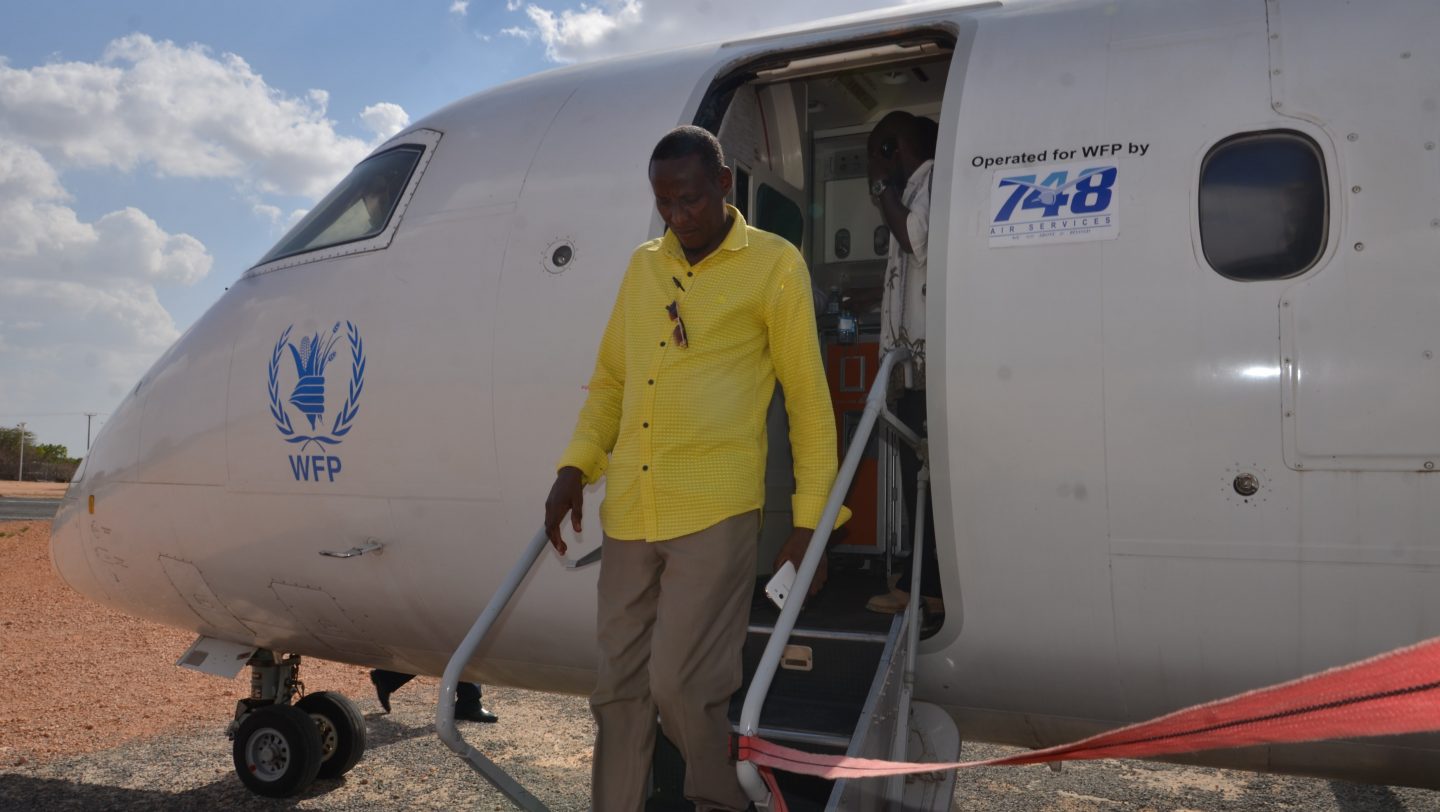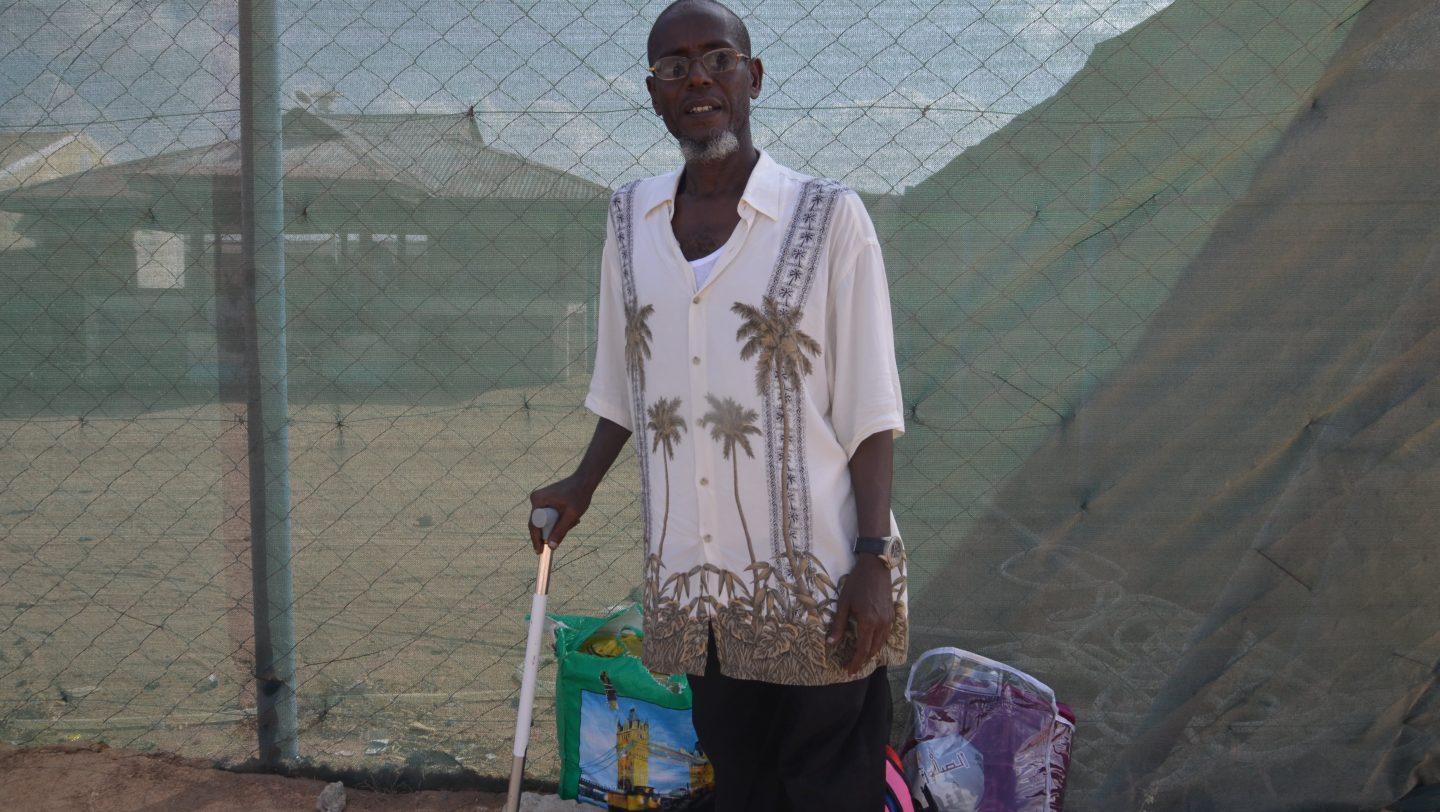Somali refugee leaders from Dadaab camp on ‘Go and See’ visit to Mogadishu and Baidoa, Somalia
It’s an initiative to keep Somali refugees informed and up to date on the situation on the ground back home, so they can make an informed decision about whether to return.
Refugees prepare to board buses for their return back to Somalia in this file photo. 12 designated areas of return, based primarily on security situation and humanitarian access to those areas, have been agreed upon by the Tripartite Commission. © UNHCR/Assadullah Nasrullah
Somali refugee leaders from Dadaab refugee camp in Kenya, have been on a ‘Go and See’ visit to Mogadishu and Baidoa, in Somalia. It’s an initiative to keep Somali refugees informed and up to date on the situation on the ground back home, so they can make an informed decision about whether to return.
Nearly 40 leaders were part of the trip. The visit was organized by UNHCR, the UN Refugee Agency, as part of the voluntary repatriation programme, where Somali refugees are given the opportunity to voluntarily return to their country of origin.
The Voluntary Repatriation programme started in December 2014 after the two governments, and UNHCR signed a Tripartite Agreement, partly designed to find a long term solution for the Somali refugees who have been in Kenya for over 25 years.
The leaders visited the Somali capital, Mogadishu, and the town of Baidoa.
The trip was designed to provide the leaders with enough information and exposure to take back to refugees in Dadaab, who might be considering return. During the trip, known as ‘Go and See’ among refugees, the leaders visited the Somali capital, Mogadishu, and the town of Baidoa.
The ‘Go and See’ visit also enabled refugee representatives to visit places of origin for Somali refugees in Dadaab, and other areas considered safe to return to. During the visit the leaders familiarised themselves with the situation on the ground.
Isnino Maalim Dakane, has been a refugee in Dadaab for nearly a decade and is one of the leaders that travelled. She is a community leader and, as Chairperson, she represents the interests of refugees living in Ifo 2, one of four Dadaab camps.
“We had a very successful visit and we must thank UNHCR for facilitating our travel to Baidoa and Mogadishu. We are going to share our experience with fellow refugees in the camp.”

Children from Dadaab prepare to return to Somalia. As at 15th January 2018, 72,921 persons from Dadaab had been assisted in the framework of their voluntary return to Somalia since assistance to Somali refugees in the framework of the voluntary repatriation process started on 8th December 2014. © UNHCR/Assadullah Nasrullah
Since the voluntary repatriation programme started in December 2014, there have been 7 ‘go and see’ visits by refugee community leaders in Dadaab.
As of mid-January 2018, 72,921 refugees from Dadaab had returned to Somalia under the voluntary repatriation programme. Across Kenya, the number stands at over 75,000, as some Somali refugees have voluntarily returned from Kakuma camp in Turkana County, and Nairobi in Kenya. Currently 18,000 refugees have registered to go back.
In Somalia, along with Mogadishu and Baidoa, only 10 other areas are considered safe to return to, Kismayu, Luuq, Beletweyne, Afgooye, Balad, Jowhar, Wanylaweyn, Belet Hawa, Diinsor town, and Afmadow.
Safety is based on the security situation and humanitarian access for UNHCR and other agencies.
Abdirahman Omar Khalif has been a refugee in Dadaab since he was 6 years old, now 32, he’s another leader that traveled.
“This visit has been an eye opener. I was part of the group that visited Mogadishu in which we saw improvements especially in security, although there are still challenges in the education and health sectors. We will be compiling our final report to share with other refugees.”
“We are going to share our experience with fellow refugees in the camp.”
Mohamed Abdi, a leader from the Dagahaley camp in Dadaab who also took part in the ‘Go and See Visit’ feels optimistic about some of what he saw. He said;
“We saw great improvements in Baidoa especially in security. We could walk around late into the night. There are, however, still challenges of water, sanitation and health which need to be looked into”
The leaders will get the chance to appear on radio in Dadaab, so that as many refugees as possible can hear about the ‘Go and See Visit’ and their assessments of the situation.
In addition to ‘Go and See Visits’, Return Help Desks have been set up in all four Dadaab camps, where UNHCR, the Government of Kenya and the Norwegian Refugee Council (NRC) provide information to refugees on conditions in the safe areas of return, including information about what assistance and services are available.

Return Help Desks have been set up in all four Dadaab camps, where refugees are provided with information on conditions prevailing in areas of return, including available assistance and services. © UNHCR/Assadullah Nasrullah
In Dadaab, refugees are given time to think carefully about choosing to return. Those who decide that they are ready to return, are registered, receive regular briefings, and either return on a flight or by road. Refugees are free to change their minds about return up to the last minute before departing.
The Dadaab refugee camp has been the home of Somali refugees since 1991. There are currently 238,506 refugees and asylum seekers in Dadaab, and 96% are of Somali origin. Most fled the civil war, and there was a second large influx of refugees from Somalia who fled famine and drought in 2011.


